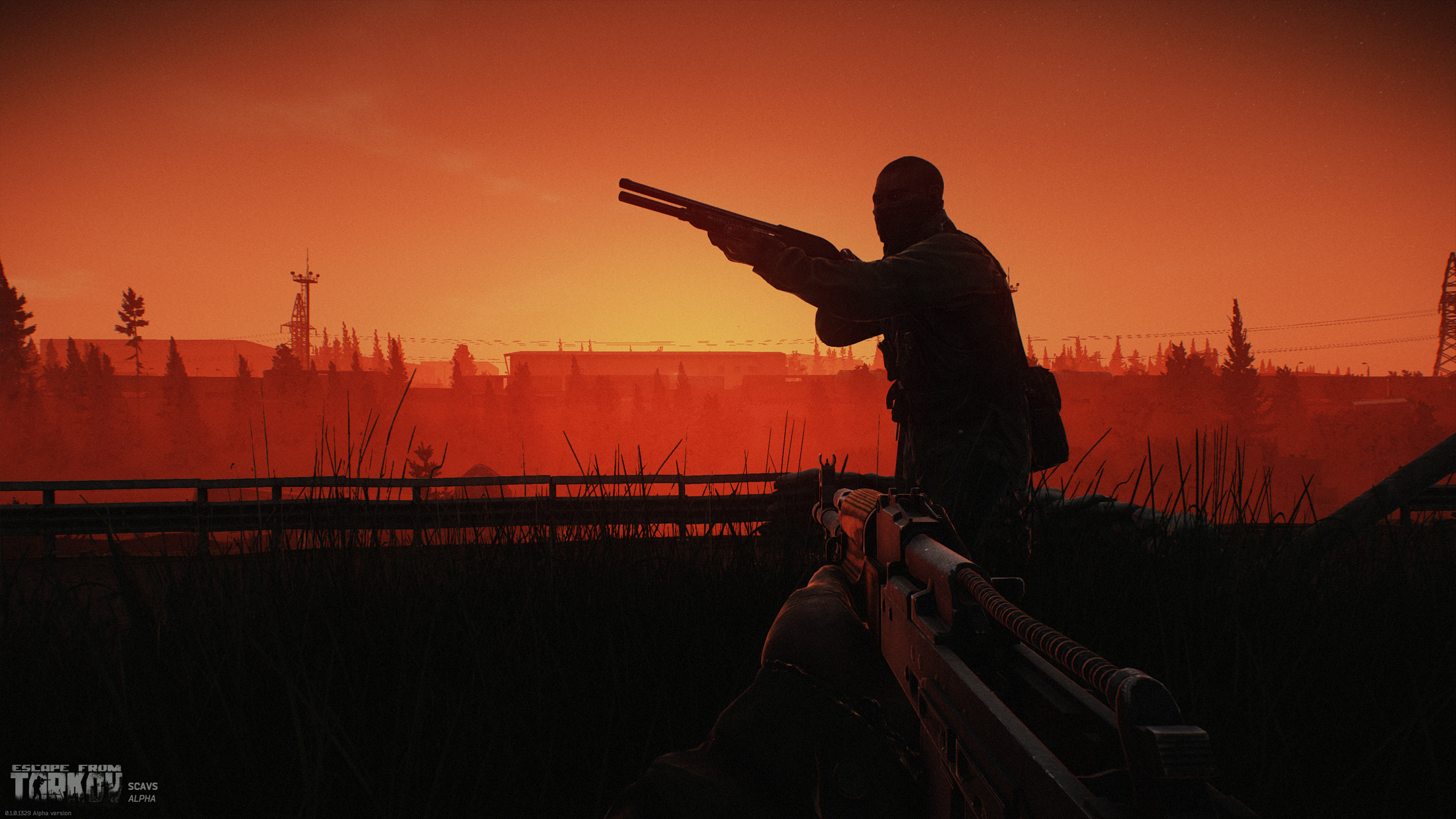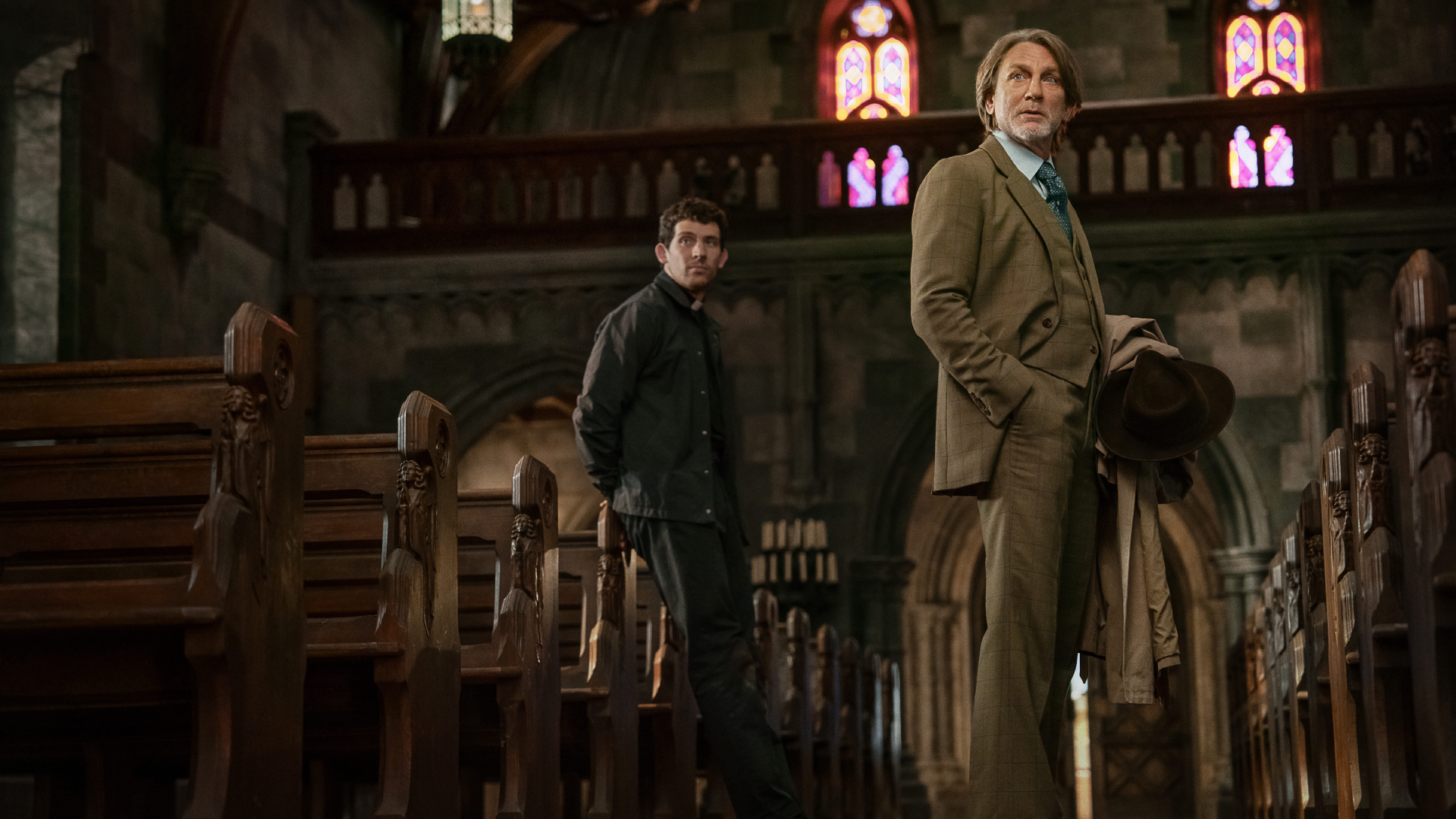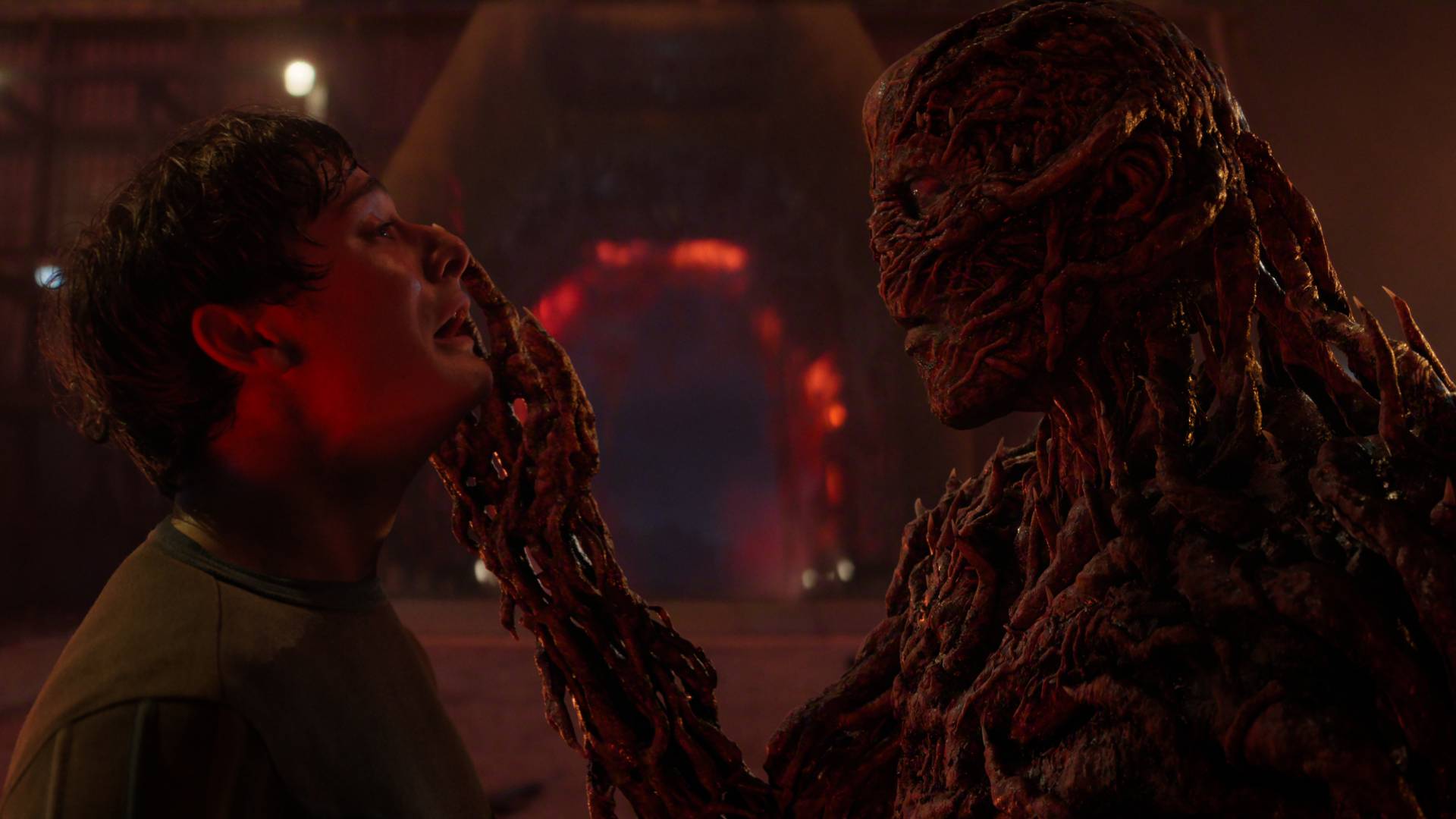With "multi-map spanning secrets" and "phantasmagorical" horrors, Hell is Us wages a brutal civil war that already has me on edge
Hands-on | Hell is Us shapes up to be a unique action adventure thanks to its dedication to compass navigation as much as tricky combat
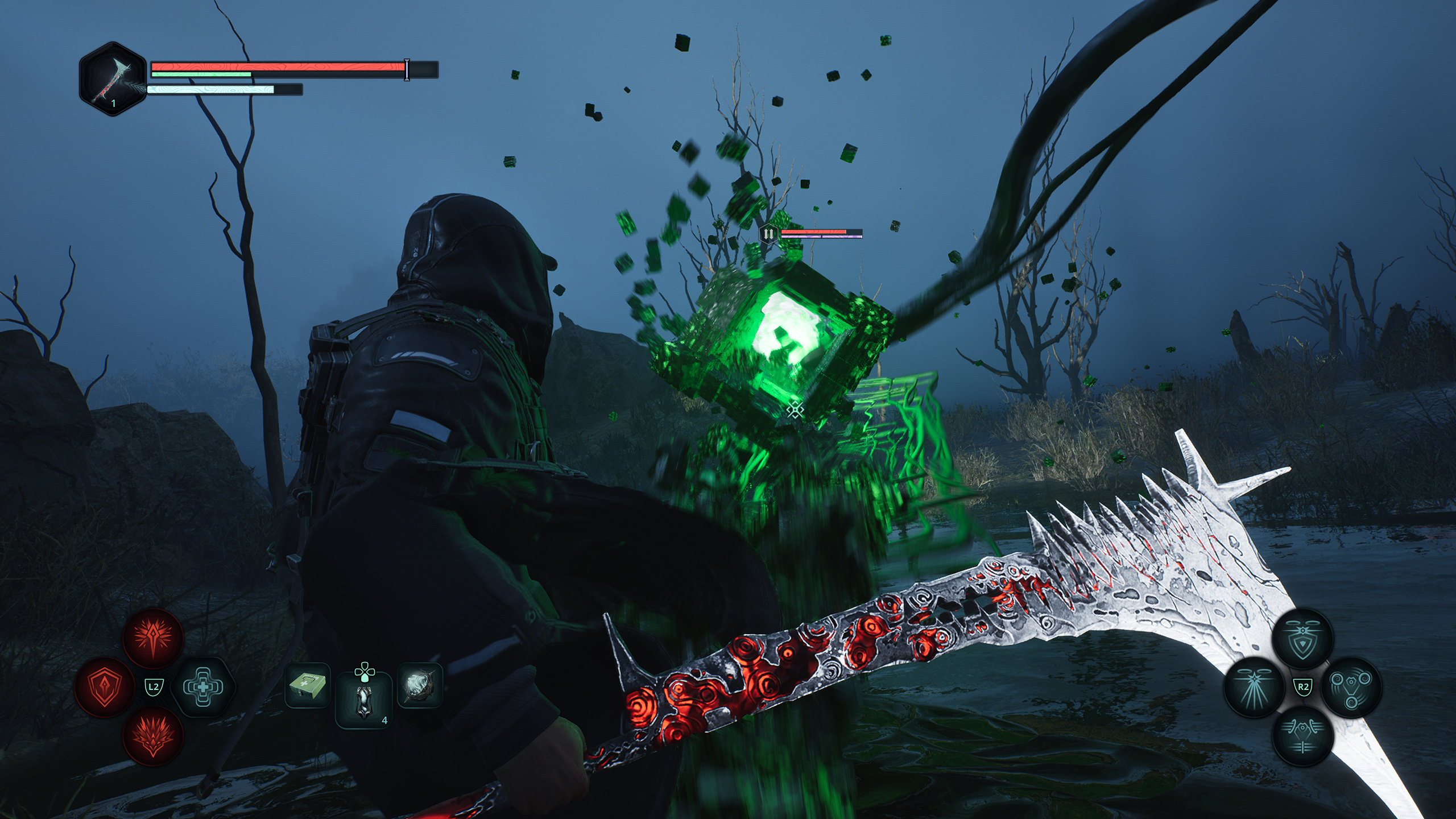
It's called Hell is Us, plural, for a reason, it turns out. I thought I had mastered swinging my oversized weapons against the strange, pale, fleshy humanoids called Hollow Walkers. But then, one becomes two – a glowing version of the jelly-like enemy opens up and a strange shifting mass of red cubes falls out, suspended in the air. They're attached by an "umbilical cord", the game tells me. Pleasant. The regular Hollow Walkers have a stop-start pacing to their attacks that's difficult enough to read, but these strange sci-fi shapes feel even more erratic as I try to parry almost Green Lantern-like shape assaults.
In reality, of course, the title Hell is Us isn't just about the bizarre enemies Remi encounters as he returns to his home country, Hadea, in the middle of a particularly brutal civil war in 1993. His parents had smuggled him out of the hermit state country at a young age. But, compelled to return, he joins up with a peacekeeping force to get through the border before going AWOL to track down his parents – only to discover that as bloody as the civil war is, something that seems to defy reality itself is bubbling beneath the surface of its strange tombs.
'90s Circle of Hell
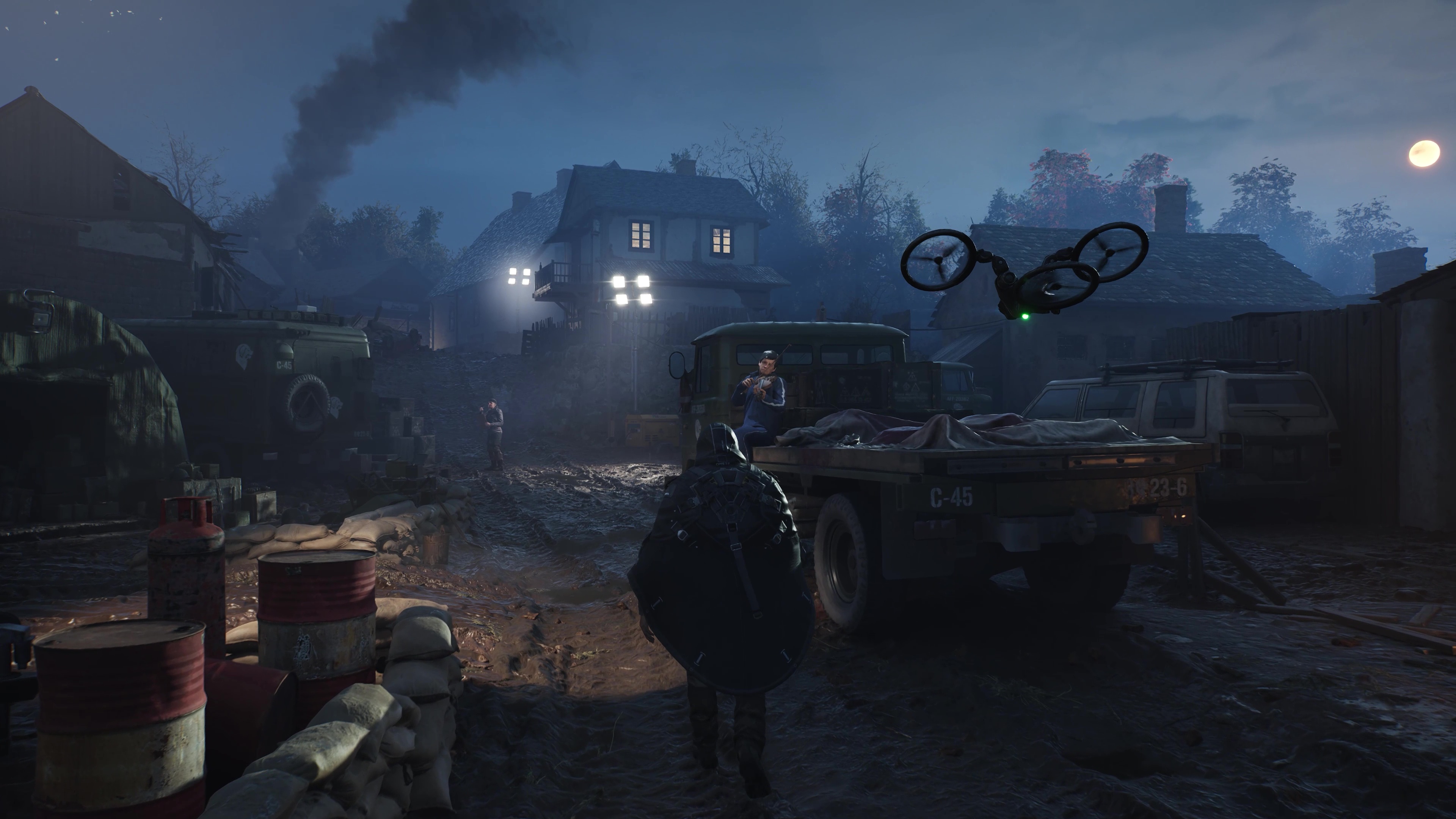
Developer: Rogue Factor
Publisher: Nacon
Platform(s): PC, PS5, Xbox Series X
Release date: September 4, 2025
Hell is Us' military aesthetic echoes the likes of Metal Gear Solid and Death Stranding with its tactical gear and rain ponchos, and creative director and art director Jonathan Jacques-Belletête's time working on Deus Ex: Human Revolution and Deus Ex: Mankind Divided can be felt too in the angular sci-fi elements. While a lot of my hands-on revolves around trudging through muddy trails and dark tombs, there are moments of beauty in the ruined vistas – one field of blue flowers in particular standing out as quite striking.
Just like the strange goopiness of the white Hollow Walkers, there's something almost unnaturally sleek to Remi's melee weapons, which he finds after encountering someone else wielding them. Normal guns are useless against the unnatural threats that stalk the land. Jacques-Belletête describes the off-kilter, out of place designs as "phantasmagorical". Remi is just as likely to stumble on a bizarre crypt full of smooth doorways and sickening, ritualistic lore notes about racial conflict in the region as he is to explore a ruined shack on the edge of a cemetery or poke around World War 1-style trenches. Importantly, though, both are here – and the collision creates an uneasy atmosphere.
Inspiration for the fictional Hadea has been taken from all over. Eastern Europe included, of course, but not solely as Jacques-Belletête finds it "a bit cliche" and doesn't want to invite too much comparison with the likes of Stalker 2, which also has a military aesthetic and themes. He's also inspired by the British countryside, including the New Forest in particular – a place he calls "magic".
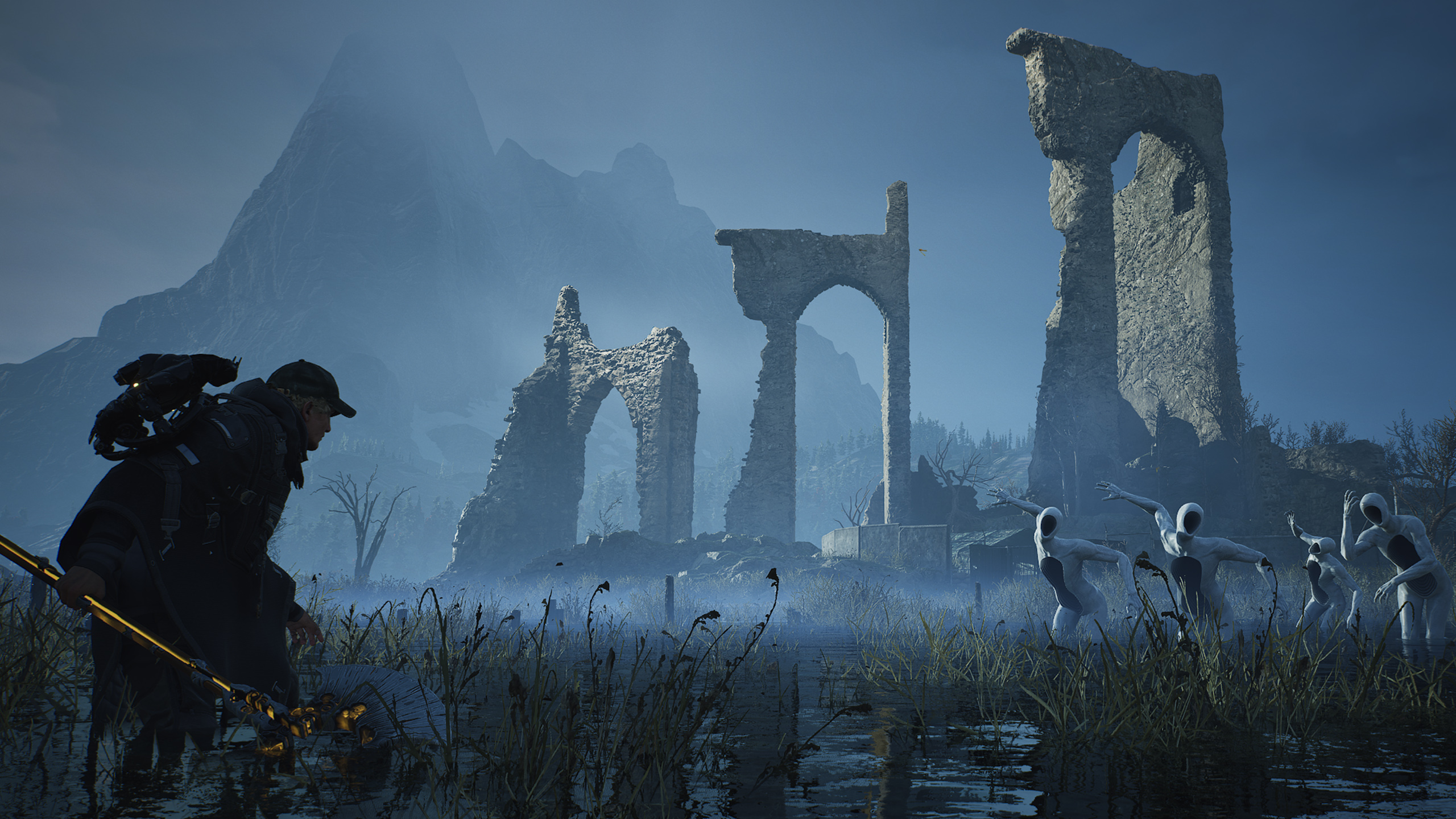
Hadea is built on top of something, but understanding it, even as you grapple with the consequences of it being unleashed, is another thing entirely.
The idea is to bring the strangeness into these familiar feeling locations and have them live side by side. "I did a bit like what Disney was doing in the 30s, this fascination with the more fable-y Europe stuff," says Jacques-Belletête.
But, thematically, it's also "a bit like being in Cairo," he notes. "You're in a modern city, then you have those ginormous pyramids behind you that for the longest time [nobody] remembered what they really were – even today, we're not fully sure," he says, adding "the Sphinx was half buried under sand at one point". Hadea is built on top of something, but understanding it, even as you grapple with the consequences of it being unleashed, is another thing entirely.
Weekly digests, tales from the communities you love, and more
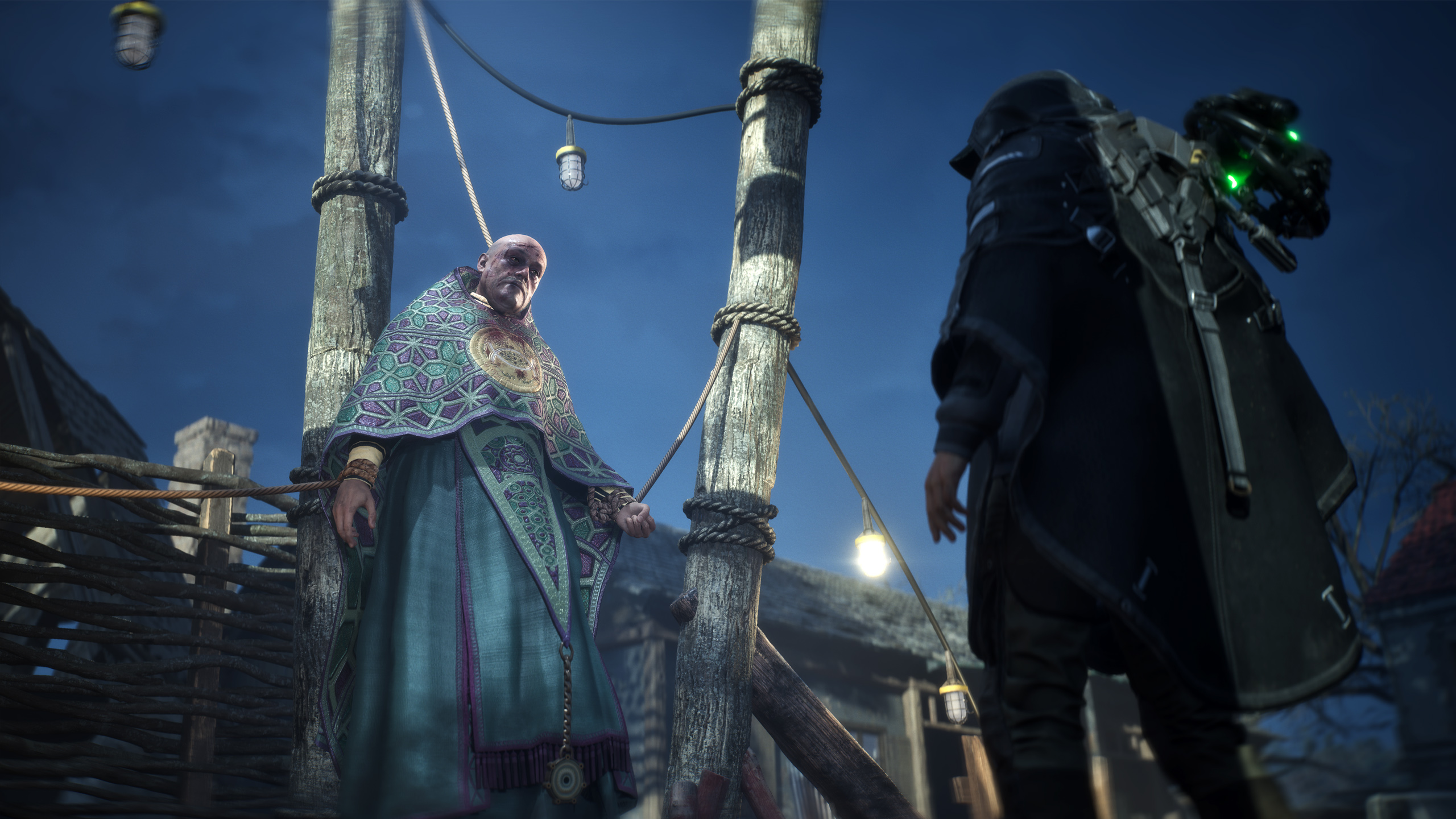
The '90s setting, on the other hand, comes from observing the geopolitical landscape of the era. "It's as simple as this. It was a decade of civil war. You had the Bosnian war, you had Kosovo, you had Sierra Leone, you had one in Rwanda," says Jacques-Belletête. "There's still civil wars today, sadly, they happen all the time. Sometimes we don't even hear about some smaller ones. But in the '90s it was like a bloody trend. [We thought,] let's kind of thematically be there with them, temporally, chronologically."
It also adds to the sense of colliding aesthetics. Crunchy '90s analog technology is very recognizable and evocative, making it all the more obvious when Remi loads up with glowing swords and a high-tech drone that something is off. "But when you see computers in the game, when you see television units in the game, when you see things like that – it's like 'Oh yeah, yeah, okay, we're in the '90s'," says Jacques-Belletête.
Hell to pay
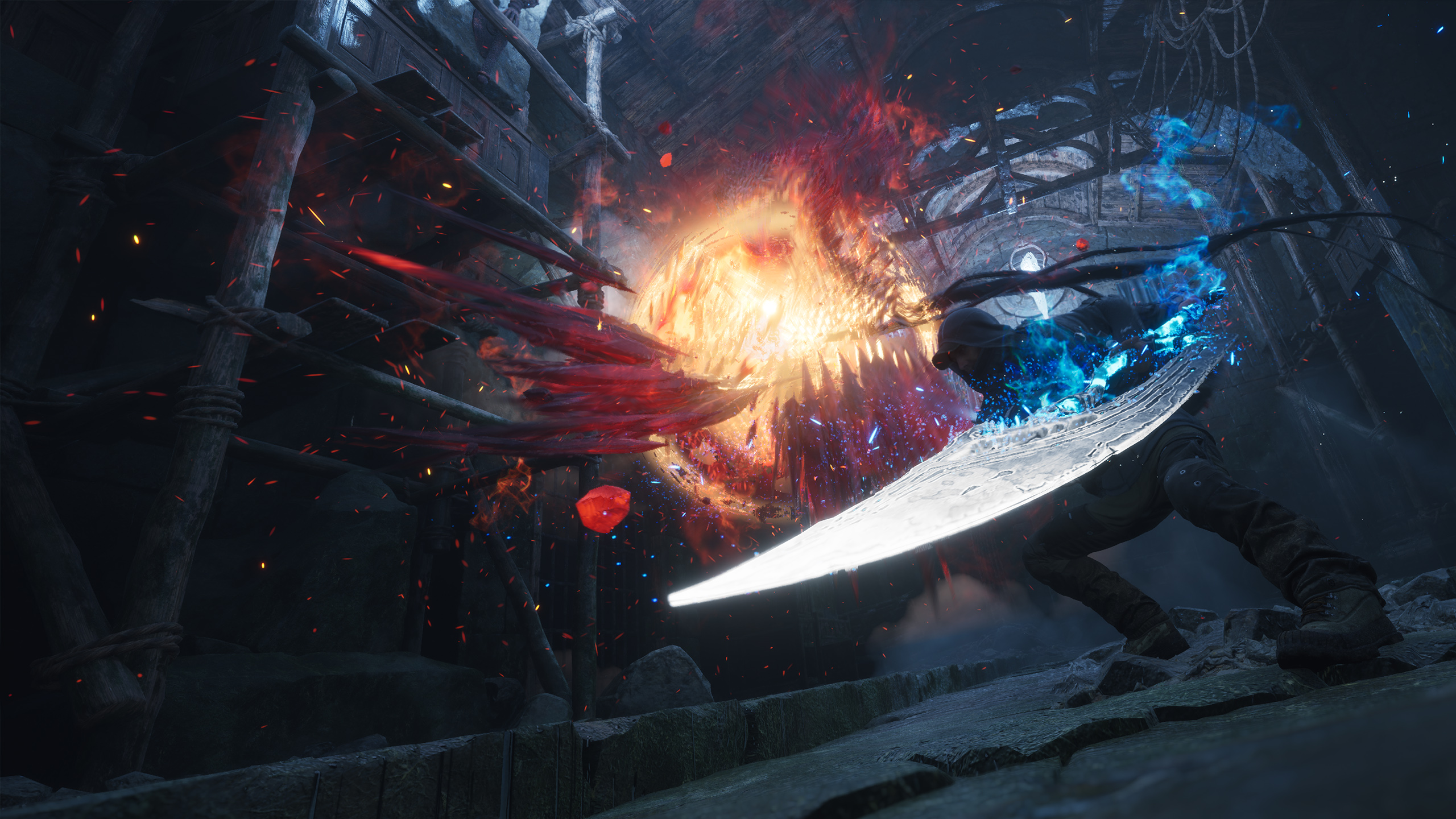
Just as aesthetics and technology create this off-beat mix, so too does Hell is Us find a unique cadence in play even as it takes some cues from other action adventure games. Jacques-Belletête takes some issues with soulslike comparisons. With that said, "It's a bit hard to ignore all the stuff that has come from the soulslike, from the FromSoftware combat in the past I would say 15 years," he says, adding that Hell is Us doesn't default to a brutal difficulty, feature dropped experience points, or even have enemies respawn when you die (though that is an option if players want it). Combat, too, is only one part of Hell is Us' identity – some puzzles here will really make you think, and Remi will need to make use of a compass to explore discrete semi-open world areas.
Remi will need to make use of a compass to explore discrete semi-open world areas.
Even so, when Remi gets stuck in medieval style with his huge swords, twin axes, polearms, or any number of glistening weaponry, things are quite soulslike in how they function. You mix together light attacks and heavier attacks (though these powerful blows require charging, more like The Legend of Zelda, Jacques-Belletête notes). You lock-on, strafe, parry, riposte to open foes up to taking bigger damage. You warily turn corners lest you get jumped by enemies just out of sight.
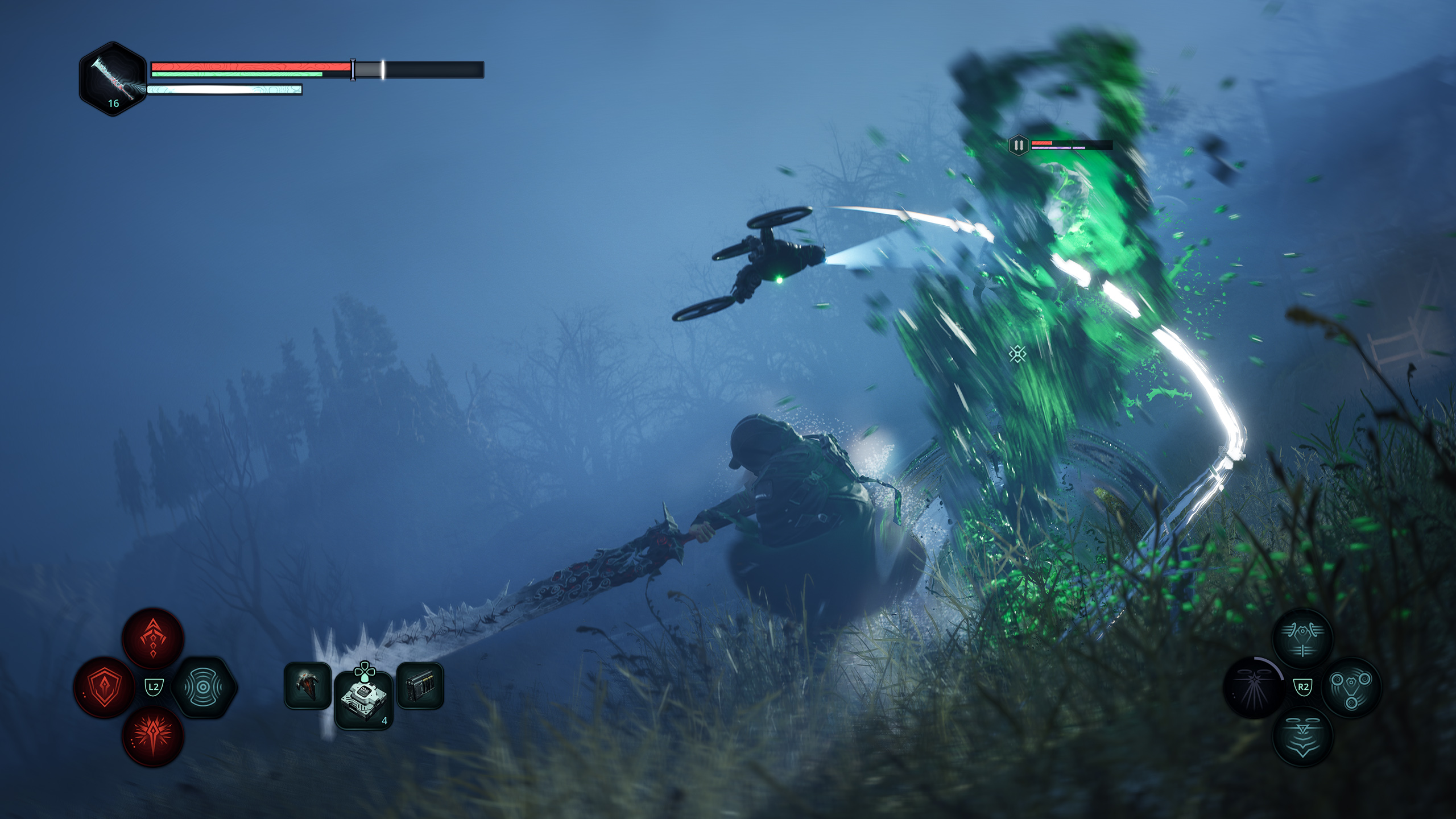
The amount of blows you can dish out depends on stamina, the maximum of which is tied to your remaining health. Encouraging aggressive play is a healing pulse which gives you a chance to cash-in a sustained combo to restore your meters with a well-timed press of a shoulder button – a bit like the ki pulse in Nioh. It does mean that getting swarmed by Hollow Walkers can push the momentum against you, making it tough to get back on top – but my demo's standard difficulty isn't too tough, and without enemies respawning (though they will if you leave a map and come back), dying isn't too punishing either.
Helping you out further is your drone, which can be modified with different abilities. Introduced early is a distraction mode that can temporarily stun an enemy in a group, useful for taking the heat off me when two beefy enemies take center stage. Returning to the umbilical cords mentioned at the beginning, this can be a big help with those – split Hollows like this won't die until both an enemy's main body and its weird blocky other self are taken out together. Later on, the drone allows me to pull off some stronger special moves on a cooldown to help in a pinch like a Crash Bandicoot-style spin attack.

Puzzles and clues lie off the beaten track.
Exploration in Hell is Us, on the other hand, is deliberately very hands-off, looking to empower players to find their own way by asking NPCs about the world, collecting keywords to probe further, and using a compass to chart your own course through semi-open areas. Puzzles and clues lie off the beaten track to complete optional investigations (yes, Remi's data pad even has a little digital clue board). While the likes of Dark Souls also emphasize exploration, and Hell is Us' dungeons are a similar network of tunnels and shortcuts, the wide zones Remi explores have much more in common with the likes of Stalker 2 or Atomfall.
Carrying a compass at all times, I'm able to activate it to temporarily add a UI element that shows the direction I'm heading in. Quite often, information given by NPCs will point me on a path that requires self-navigation, the introduction having me hunt down a dying soldier's supply camp to the north-east. At other times, turned around in dungeons, it can simply reassure me I'm heading back the way I came.
Characters in the world nudge Remi to check out features of the environment – whether it's pointing him to a map to follow in the footsteps of a squad of soldiers that requires you to orient yourself, to tasking you with following wind chimes through a forest. At its best moments, Hell is Us constantly reminds you that Hadea is a space that exists for these characters.

While Remi can track the main objective in his datapad – through notes he's learned rather than any explicit quest logs – plenty lies of the beaten track to explore. In the small opening dungeon, I find a heavy door locked with grooves for animal medallions, though having found a different key item I'm free to move on and leave this puzzle if I want. Likewise, able to then move from one map to the next, forgoing the mode of transportation means I stumble on a whole other mysterious structure on the other side of a hill.
"There's multi map spanning secrets and things that evolve," teases Jacques-Belletête. You always have the option to return to past areas, and may sometimes need to. While following the main story has been designed to not be too confusing, he says they allowed them to be less forgiving with peripheral mysteries. "Good luck! You take your grid paper – I'm exaggerating, it's not a dungeon crawler – but, you know what I mean. Take your notepad, take a pencil, because you'll probably need it," he laughs.
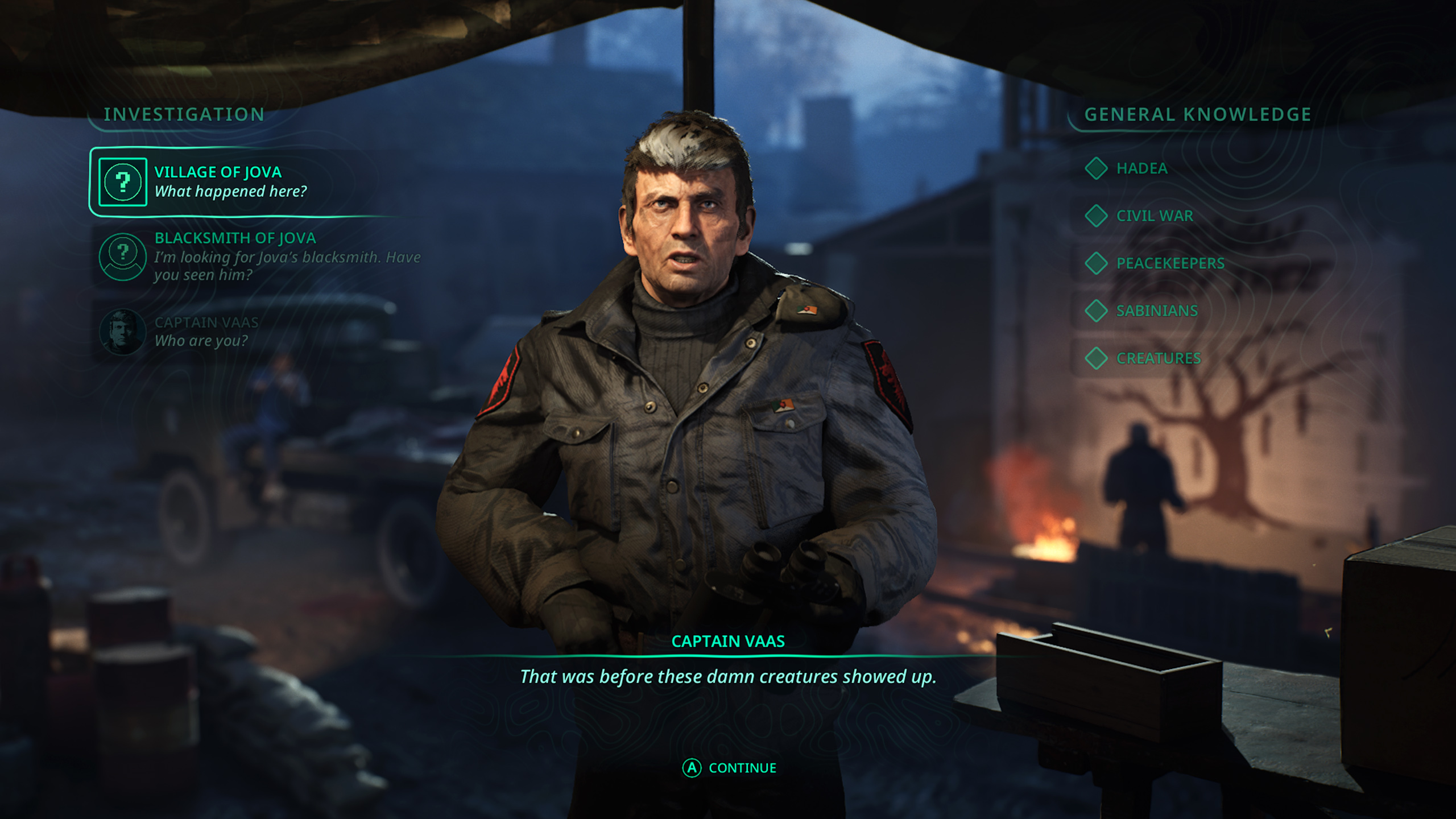
Datums – essentially keywords and nuggets of information Remi collects and notes – don't just allow you to keep track of what's going on, but are used to ask NPCs more about the world of Hell is Us. Hadea feels lived in even as many are dying – atrocities committed by humans in the civil war conflict often just as, if not more, grim than the supernatural threat itself. I've only met a fraction of Hadea's survivors, but there have been some stomach churning situations.
I'm keen to see more about how it fits altogether, but Hell is Us is shaping up to be something quite unique. "There's like a setup now that if you see it on a screenshot it's like 'ah, it's a soulslike'," says Jacques-Belletête. "But if you actually analyze what that means [...] it's not necessarily true."
There are a lot of throughlines, but I do agree that it can be reductive. While the tech drone powers can seem a little The Surge, and the goopy enemies and pointy melee combat a bit Mortal Shell, the mix of elements in Hell is Us really isn't quite like anything else. I'm looking forward to further plumbing the phantasmagorical tombs beneath this bloody civil war – even if I'm certain plenty of grim discoveries lie in wait for Remi yet.
What else is coming up? Check out our new games of 2025 highlights!

Games Editor Oscar Taylor-Kent brings his years of Official PlayStation Magazine and PLAY knowledge to the fore. A noted PS Vita apologist, he's also written for Edge, PC Gamer, SFX, Official Xbox Magazine, Kotaku, Waypoint, and more. When not dishing out deadly combos in Ninja Gaiden 4, he's a fan of platformers, RPGs, mysteries, and narrative games. A lover of retro games as well, he's always up for a quick evening speed through Sonic 3 & Knuckles or yet another Jakathon through Naughty Dog's PS2 masterpieces.
You must confirm your public display name before commenting
Please logout and then login again, you will then be prompted to enter your display name.
